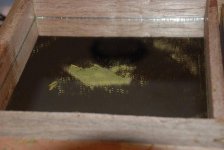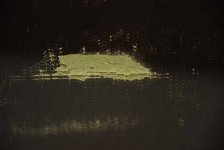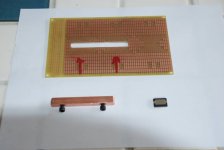Maybe try filling a cylinder or cone with dry sift and mount it on the rig and see if it will stratify when vibrated?
Good idea! I have done enough industrial processing using vibration to bet the farm that if the material was pre sifted to get rid of the matted snerds and frozen before hand, that most assuredly the kief would stratify when vibrated, with the lighter plant matter and fines riding on top.
Vibration has both frequency and amplitude, but is more complex in a solid, because it also has the direction that the wave form is traveling, as well as the harmonics of the different components being vibrated.
For instance, using vibration to stress relieve welded structures, involves clamping a variable speed motor with an adjustable eccentric weight attached to the shaft, on to the structure to be post weld stress relieved and a transducer is clamped to the area needing relieving.
By varying the frequency and amplitude of the vibration waves, different parts of the structure may be brought into harmonics and made to flap in the breeze, and a coin placed on the structure may be made to move in any direction, including sitting in one spot rotating in either direction.
Vibration also possesses high shear energy and in the above process, the vibration provides the additional energy required for the crystalline lattice planes of the metal structures to slip past one another to relieve the welding and fabrication stresses.
Breaking off fragile trichome heads certainly pales in comparison to relieving stresses in even 45 KSI yield strength mild steel, and bouncing, rolling, or sliding trichomes afterwards on a sieving screen is a matter of frequency and amplitude.
I’m also playing with screen material. The thought of stainless appeals to me from a maintenance standpoint, but I haven’t been able to stretch it as taunt as I can silk screen in my wooden frames, so the action isn’t as good
GW







